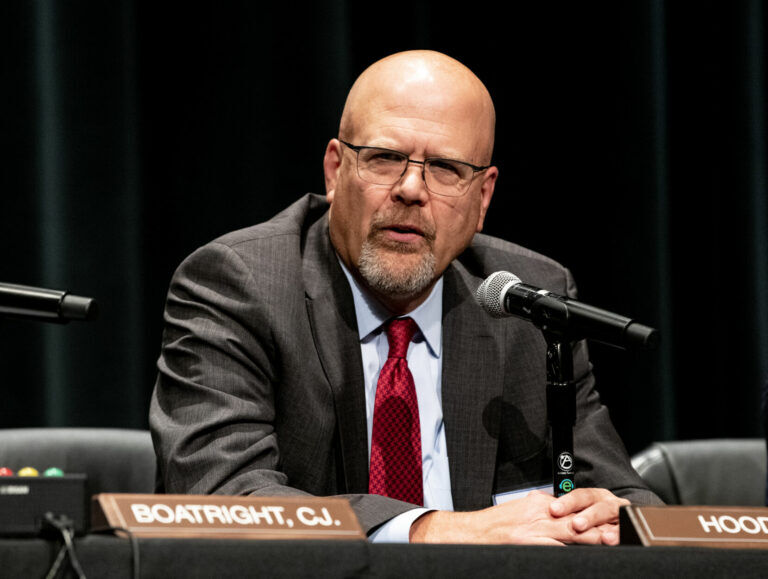Pandemic Era Panic Buying: Tips for rational shopping during this holiday season

Why has panic buying persisted in one form or another since the beginning of the COVID-19 pandemic?
We can all remember how the great toilet paper rush of March 2020 left store shelves bare and led us to question whether stores could provide the bare necessities we needed while sheltering at home. Since that harrowing time, a seemingly never-ending cycle of product and service shortages have plagued the American consumer- autos, appliances, houses, and even chicken wings have become scarcer and pricier. At the same time, consumers have been piling into financial assets, such as meme stocks and cryptocurrencies like never before, leading many of them to record highs.
Before I start dissecting all of this craziness from a consumer psychology perspective, it’s important to note that the scarcity we are experiencing is real. As a result of pandemic-era stimulus and unemployment programs, consumers’ balance sheets are healthier than ever. Combine this with homebound consumers getting out after a year of lockdowns and closures and you get the surges in demand that supply chains have struggled to keep up with in 2021. Making things even worse, many Americans quit their jobs or retired early during the pandemic and do not seem eager to rejoin the labor force.
So yes, it’s not an illusion – we really are dealing with scarcity at unprecedented levels. But what I really want to talk about in this article is how psychological biases can play a role in amplifying consumer panic buying when scarcity exists, and how you can use this knowledge to make more rational decisions.
First, let’s talk about how rational consumers really are.

Bounded rationality is the notion that consumers often use mental shortcuts or ‘heuristics’ when making time-constrained decisions with little to no information. Think about your decision to purchase sandwich bread at the grocery store. You don’t spend fifteen minutes comparing all of breads by researching and comparing all of their ingredients, attributes, etc. Instead, you likely make a snap decision based on a single attribute, such as price, packaging, brand or routine (what you have purchased before). Using heuristics make us more efficient shoppers, but they can often lead to mistakes or sub-optimal choices.
Now that I’ve explained what heuristics are, lets talk about some common mental shortcuts that consumers might use to make decisions when products seem hard to find:
Heuristic #1. Scarcity = desirability: Things that are desirable are usually scarce – think gold, diamonds, or Picasso paintings. But are things that are scarce necessarily desirable? Marketers have long known that creating the perception that something is scarce makes consumers want it more. Think limited edition products, limited time offers, and those annoying “only 3 tickets left at this price!” notifications on travel websites. This is what happened with toilet paper. There really was an initial run on it, but social media turned what should have been a manageable surge in demand into a panic – in short, amplified perceptions that toilet paper was impossible to find turned it into gold for a time.
Heuristic #2. Loss aversion: People are more concerned with what they might lose than what they might gain. There is a reason that news and social media is so full of negative stories – that’s what gets people’s attention. So, despite the fact that there is actually some good news that most retailers will be able to stock shelves this holiday season, what drives our behavior will probably be the stories about what’s out of stock. By the way, this heuristic is partly what drives fear of missing out (FOMO). Panic buying is not always driven by what you actually perceive to be the benefits of a purchase, but more so by the fear of losing out on what everyone is doing.
Heuristic #3. Availability bias: Why are some people afraid to fly? Despite air travel being one of the safest modes of transportation, everyone can probably recall a news story about a plane crash. In other words, we tend to overestimate the probability of something bad happening based on a few prominent examples that come to mind. The same thing happens when we see a social media or news story about a shortage somewhere in the country. We may overestimate the severity of the situation and rush out to buy that thing wherever we live. Again, this amplifies panic behavior when no such crisis actually exists.
There are many other behavioral biases affecting panic buying behavior than what I can list here, but the important thing is to understand that we are not always rational in our decision-making.
How can this knowledge help you navigate our current uncertain times? First, pay attention to the good news. Supply chain snarls seem to be easing and retailers seem confident that they can stock items that consumers will want this holiday season.
Next, think about what is driving you to make a purchase. Are you about to spend a thousand dollars to buy a fraction of a bitcoin because you believe doing so will materially benefit you in some way, or are you just afraid to miss out on the party (which could collapse at any moment)?
Finally, think about the intrinsic value of what you want to purchase. If you loaded up on toilet paper, Clorox wipes, and hand sanitizer back in 2020 because you were chasing after something that was temporarily scarce, you probably have a whole lot of stuff that nobody wants in 2021!
Daniel Brannon is Associate Professor of Marketing at the University of Northern Colorado’s Monfort College of Business. He is an expert in consumer behavior.













